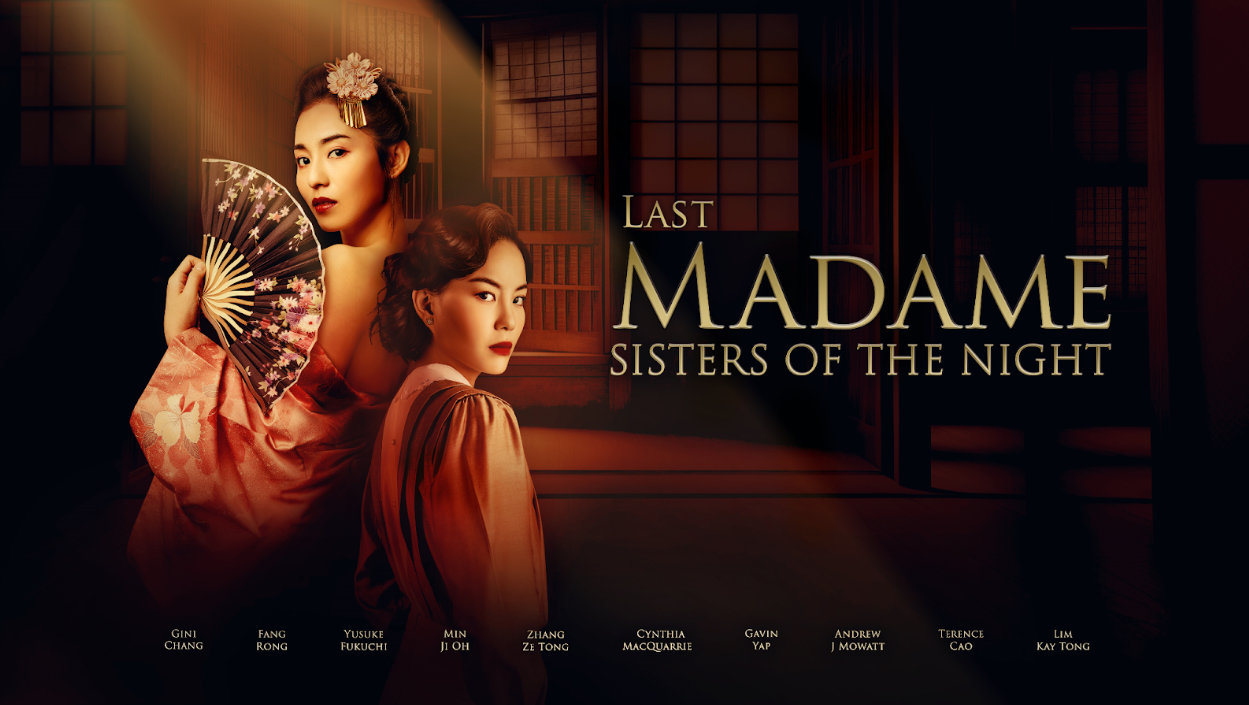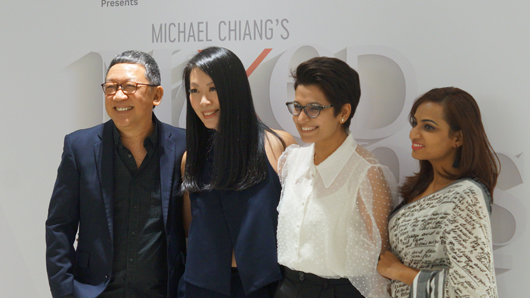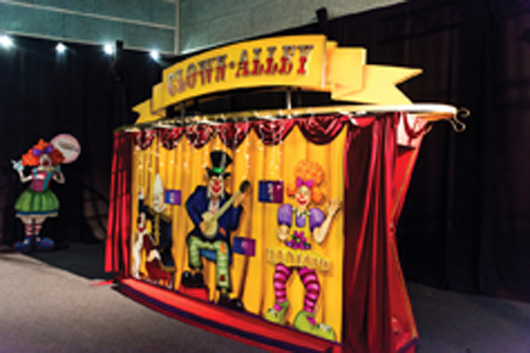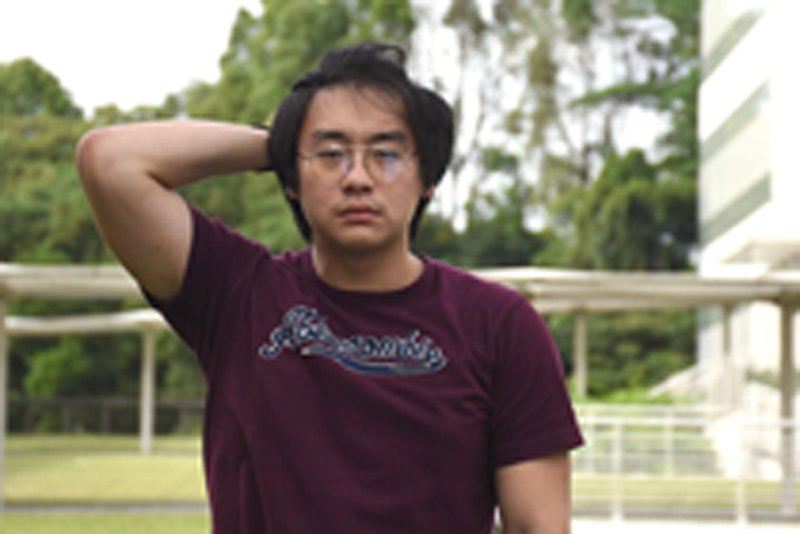Set in the 1920s, Last Madame: Sisters of the Night, is a prequel to the historical drama Last Madame, released in 2019. In this prequel, the show centres around the themes of sisterhood, survival, espionage and Singapore’s history and culture during the era. Following a young Fung Lan (played by Foo Fang Rong) and Ah Yoke (played by Gini Chang), it documents how the two, coming from vastly different backgrounds, rise above shared tragedy, and become the people they are in Last Madame.
The Republican Post was invited to take a set tour, as well as interview two of the actors in the show: Fang Rong, who plays a young Fung Lan, and Zhang Zetong, who plays Ah Tou in the series.
The tour begins as we walk onto the set, located in a warehouse in an industrial area. From outside, the warehouse appeared plain and an unlikely place for a film set.
However, appearances were deceiving. As we stepped into the warehouse, we were transported into a 1920s brothel and a long-forgotten era in Singapore: one where women and girls had to fight for their rights and were treated as though they were mere property.
Our tour guide for the day was founder and creative director of Ochre Pictures, Jean Yeo. Beckoning the group to proceed inside, she began to explain the history of the courtyard to us, as well as what rationale went into the set design.
Stepping into the set, you could see a large wooden cage placed in the middle of the reception hall. In 1920s Singapore, this was where the girls of the brothel would be shown to possible patrons, before purchase of their services. A counter nearby held wooden tags with the girls’ names written on them, so the patrons could easily select who they wanted.
(PHOTO: Daniel Ooi Chun Gee/Ochre Pictures)
Looking around, you could also see that modifications had been made to the rooms, such as holes in the windows and walls so that the cameras could have an unobstructed view of the set. To demonstrate, the actors lifted up the window flaps and waved to the crew behind.
According to Yeo, the set of the brothel was painstakingly recreated so that set elements like the furniture and clothing looked like they came out of the 1920s. Even to an untrained eye, you could observe the work the set designers put into it when the completely new set looked like it had been used for a decade or two.
“Look at all those stains?” Yeo explained, gesturing to the walls and windows of the set. “Those were purposefully done. It’s not because it’s (naturally) aged, we aged it.” As for whatever those stains were, we were invited to let our imaginations run wild.
The costumes were also another talking point of the tour. “We actually imported a lot of these kimonos from Japan,” Yeo said. “We ordered from vintage sites, so some of the kimonos are actually vintage. For the key characters, we actually have the original kimonos from Japan, and only for the subsidiary characters we bought some (kimonos) from Singapore.” The bedside tables also had equipment that was used by the courtesans, but in the style of the 1920s, rather than their modern counterparts.
Since there was virtually no electricity in Singapore in the 1920s, the set designers had to adapt to the period. Large manually lit lamps that were constructed of wood and paper stood by the courtesans’ bedsides.
Overall, the tour was an insightful look into how Ochre Pictures managed to transform an empty administrative warehouse into a 1920s brothel. When you’re watching a period piece, it’s not often that you observe these little details, but the work of the set designers and creative personnel on set really add to the immersion, and it’s an important part of the viewing experience.
Once the tour was over, we headed back upstairs to have a chat with the cast.
When we watch our favourite period dramas, we tend to get immersed in the experience of feeling like we are transported to said time period. However, we might overlook the effort that the cast and crew put into making sure that immersion is achieved, for example, how the cast effortlessly blends into the time they are supposed to portray with their choices of language and acting. And as laymen, these choices can be hard to understand. How does an actor manage to portray himself as a completely different persona? And what is it really like to work on a set?
Fortunately, we got a fascinating glimpse into an actor’s thought process and experience here, as explained by Ze Tong and Fang Rong.
So you may be thinking, are Ze Tong and Fang Rong similar to the characters they portray? Ze Tong thinks that they are both charming in character but he doesn’t share the same idealism and suavity that his character, Ah Tou has. Meanwhile, Fang Rong believes that she embodies the confidence and impulsivity that her character, Fung Lan, has but is not as wilful as she is. She laughs and says that her younger self was more wilful though.
Ze Tong also shares that “Actors are like products on a shelf, forever waiting for someone to come and pick us”. That being said, he was intrigued to do the audition for the characters Ah Tou and Daisuke. He liked how well-written the scripts were and wanted to try out acting as Daisuke because that character’s personality was something he had never tried before. However, he landed the role of Ah Tou instead, which is something he admits to being “a lot closer to what I’m capable of playing.”
Aside from that, the actors also shared some difficulties. For example, Ze Tong shared that one of the biggest challenges he faced portraying Ah Tou was the language used. Although most of our daily conversations today are peppered with Singlish words such as “Yah,” those who spoke English in the 1920s were considered highly educated and would have spoken proper English.
“Sometimes I have to doubt myself. Can I say OK? Maybe they don’t use OK. So there’s a lot of self-doubt whenever we ad-lib certain lines.” Ze Tong mused.
It is natural that there are some aspects that the audience fail to consider in period dramas. For example, when the actors portray what it was like to communicate as their characters in that time period through their usage of language.
How does he get over the language barrier of time? “On set, I’ll read through the lines a couple of times before coming in, that will be my homework. Then I’ll meet the co-stars and read the lines to each other, to see if it sounds weird.” Ze Tong expressed.
We also had to consider the fact that during the 1920s, there was no electricity, something we take for granted in this modern age. Further emphasising this, Ze Tong added, “There are no cars. You don’t go out in cars. When you call each other, it’s still using a landline. But only the rich people get a landline telephone. When we talk to each other, everything, we must still assume there is no electricity.“
Next, we talked with Fang Rong further, who revealed more insights about her character, Fung Lan.
Fang Rong feels that her character, Fung Lan, is a very nuanced character whose personality is put at odds with her situation as a woman living in the 1920s. “As much as Fung Lan is a very confident, very powerful woman, there is a part of her that feels very vulnerable. She goes through a lot of stuff in the show and because of that vulnerability, she has to put up these layers of defence to protect herself, to get back what was taken away from her” adds Fang Rong.
She quips that she is really grateful to play Fung Lan as a character. She is also amazed by how the producers were able to make a prequel based on the already highly detailed Last Madame and yet still add even more content to create a completely different timeline.
It is evident that Fang Rong has a lot of passion for portraying her character and the show in general. To her, creating something is the fun part of acting.
She said: “I liken it to painting sometimes. You have a blank canvas, and your emotions are your painting.”
Greatly enriched by what they have said in the interview, we learnt what really goes on in the mind of actors preparing for a period drama, and how much hard work goes into portraying a character from a different era, but the replies that both actors have given make it sound extremely rewarding.
After experiencing the tour, and learning about the work that went into its production, it is clear that Last Madame contains a poignant message, one that is communicated perfectly through Fang Rong’s reflections.
“One of our last scenes is watching the sunrise. I feel like that is so symbolic – the night will pass, and the sun will rise. When we watched the sunrise, it was me, Gini (Nozomi) and another one of our sisters. You have that sense of people who support you, you’re resilient, and you know your worth. I hope everyone can take away from that, not just little girls.”
Last Madame- Sisters of the Night is released on July 13 on MeWatch and the Mediacorp YouTube Drama channel on July 20, 2023.





